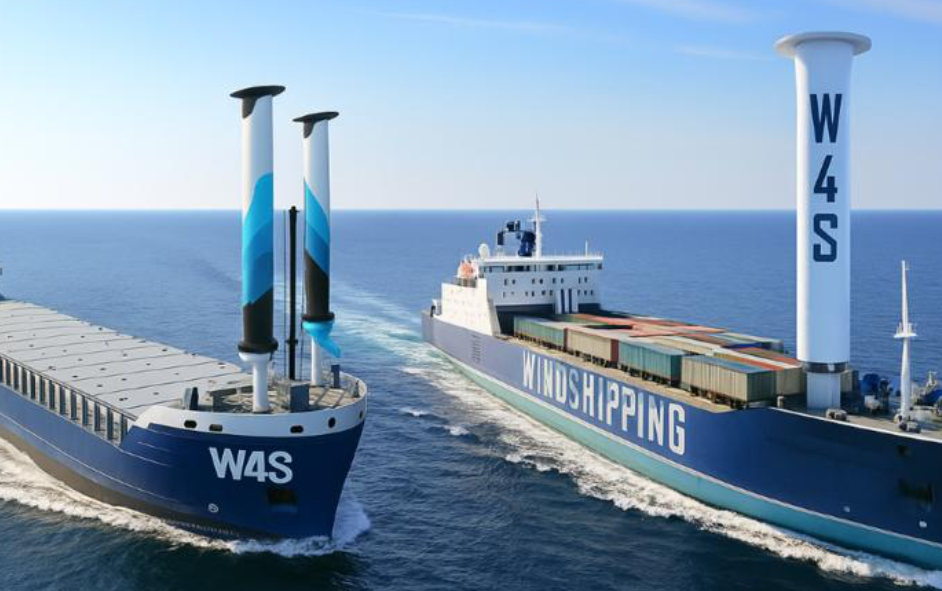The topic of low-emission shipping is currently gaining momentum, with significant players in the maritime industry stepping up to contribute to this critical mission. One of the key players, the French classification society Bureau Veritas, has joined the Wind for Shipping (W4S) initiative, aimed at fast-tracking low-emission shipping solutions. This collaboration is not only set to redefine shipping standards but also aligns with broader logistics strategies in the industry.
Understanding the Wind for Shipping Initiative
Initiated in January 2025, the Wind for Shipping project is funded by the Interreg North-West Europe program and is anticipated to operate until July 2028. This initiative focuses on exploring and implementing wind-assisted propulsion solutions, such as rotorsails and wingsails. These innovative technologies are believed to reduce fuel consumption by an impressive 20% to 40%, directly impacting greenhouse gas (GHG) emissions from commercial vessels.
Objectives and Contributions of Bureau Veritas
The Bureau Veritas Solutions Marine & Offshore (BVS) is poised to contribute significantly to this initiative through various technical calculations and methodologies. They will provide computational fluid dynamics (CFD), weather routing calculations, and customized on-board measurement data. With hydrostructure and energy efficiency simulations, they will develop modeling methodologies that assess wind-assisted propulsion systems’ performance and their impact on vessels. This diligence is crucial in optimizing systems that will contribute towards reduced emissions.
Collaborative Framework and Partnerships
The W4S initiative is characterized by a collaborative framework, engaging 12 partners, including shipyards, maritime transport companies, research institutes, and regional authorities across the Netherlands, Germany, Belgium, and France. The project’s budget is €5.7 million, with a significant portion co-financed by the European Union. This cooperation underscores the collective efforts needed to foster low-emission technologies within the maritime sector.
Impact on Logistics and the Maritime Sector
Efforts to reduce emissions in shipping are crucial not just for environmental sustainability but also for navigating through evolving regulations that affect the logistics industry. As more companies shift towards low-emission practices, this will likely reshape shipping costs, logistics strategies, and supply chain dynamics. In practical terms, this means companies engaged in logistics, like GetTransport.com, may find increased demand for services that utilize greener technologies, aligning operational strategies with international sustainability goals.
Wind-Assisted Propulsion Systems: A Closer Look
The momentum towards wind-assisted propulsion has been steadily increasing. The application of these systems saw rapid uptake in the operational landscape. As of the end of 2024, there were 54 large ships equipped with wind propulsion systems, reflecting a marked interest in sustainable technology. The growth of this sector indicates that there is both market interest and a necessity for innovation to address environmental concerns.
Governmental and Industry Support
Last year, the French government and multiple stakeholders solidified their commitment to wind propulsion technologies by signing a significant wind propulsion pact. This initiative aims to catalyze the industrial-scale implementation of wind-powered solutions in shipping, targeting an ambitious goal of capturing 30% of the global market share with domestically produced wind-assisted propulsion systems. Such governmental actions encourage the maritime industry to adopt cleaner practices that not only benefit the environment but also present new business opportunities.
What’s Next for Low-Emission Shipping?
The roadmap ahead for low-emission shipping is ripe with challenges and opportunities. With the collaborative efforts of Bureau Veritas and other partners under the W4S initiative, the future could see a paradigm shift in how shipping operations are conducted—making wind a pivotal element of sustainable shipping strategies. Robbert van Hasselt, the project leader for Wind for Shipping, emphasizes the importance of scaling wind propulsion technologies to make them economically viable. His remarks reflect a broader sentiment within the industry: combining technical innovation with scalable solutions is fundamental to accelerating the transition towards sustainability in maritime transport.
Wrapping Up Low-Emission Support
As the maritime logistics sector gears up for this transformation, it becomes increasingly clear that implementing wind-assisted technologies will not just adhere to regulatory compliance but will also set a foundational standard for future shipping operations. Stakeholders from various sectors, including logistics companies, must prepare to adapt to these upcoming changes.
To sum it up, the pursuit of low-emission shipping stands at a crucial intersection of sustainability, economy, and innovation. While reviews and discussions around it are insightful, they cannot replace the invaluable lessons learned from personal experiences. For those looking to explore reliable and innovative cargo transportation solutions, consider the versatility and transparency offered by GetTransport.com. From office moves to the transportation of bulky items, GetTransport.com provides a plethora of options tailored to meet your logistics needs, ensuring you get the best bang for your buck without sacrificing quality or ease. Don’t miss out—book your next move with GetTransport.com 今天!

